Russian Island Cannons: How the Voroshilov Battery Instilled Fear in the Japanese
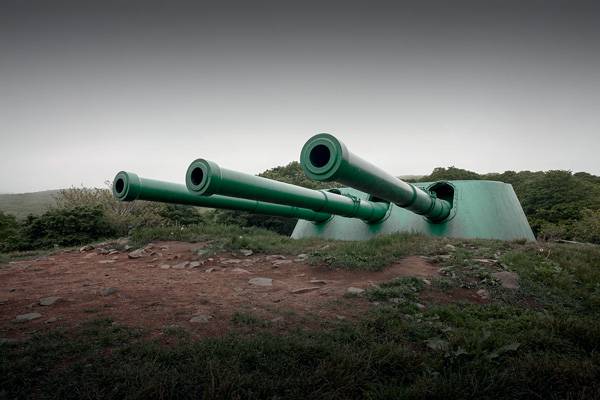
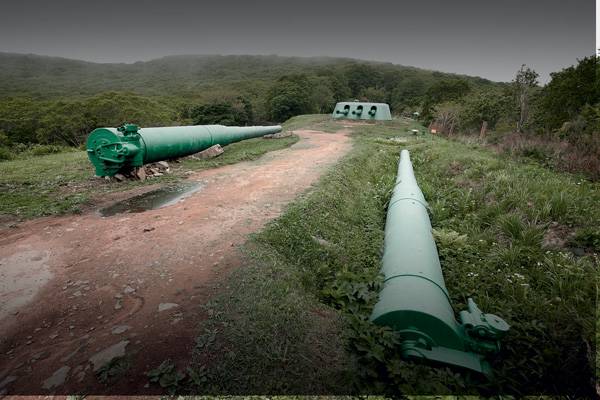
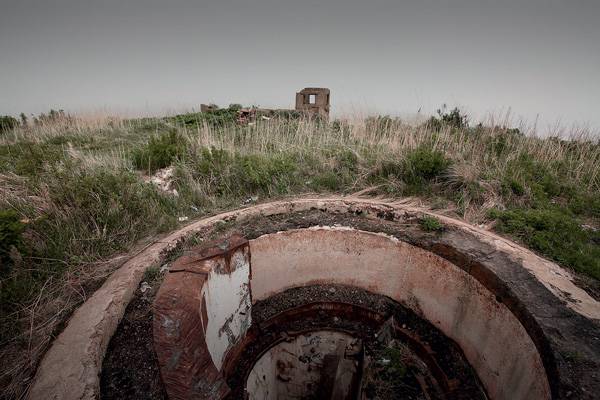
After the First World War in Europe, many fortified areas and defensive lines were built. In France, the Maginot Line, in Germany, the Siegfried Line against France and the Panther-Wotan Line against very aggressive Poland at that time. Almost all European countries, including Switzerland that had not fought since the beginning of the 19th century, acquired their own “Maginot lines” to protect against dangerous neighbors.
In general, fortified areas are just variations of the Great Wall of China, constructions of a grandiose, expensive and completely useless. Cunning forts, pillboxes, barriers made, and today make a strong impression on people - both civilians and military - even after they turned out to be worthless during the war years.
Shore batteries
But the defense of seaports, on the contrary, should be organized precisely on the principle of maintaining tough positions - primarily from attacks from the sea. Port - a base and a refuge for ships, no operations are impossible without ports fleetnor its very existence. For example, in the Russo-Japanese War, the struggle for the Kwantung Peninsula was reduced to the battle for Port Arthur. And it was precisely the fall of this port that sharply changed both the balance of forces at sea and the situation on the entire Russo-Japanese front.
The port must have a sufficient number of long-range large-caliber guns to keep enemy ships at a distance and cover their ships leaving or entering the water area.
Moreover, until the ports are seized on the coast, the landing of the amphibious assault does not make sense - such a landing force, even if successful, cannot normally be supplied and fought. For example, during the landing of an Anglo-American assault force in Normandy in the summer of 1944 for the Allies, the first task was to capture the nearest port of Cherbourg. Only after that was it possible to advance deep into France.
So, the port together with the port city must be defended at certain frontiers, on the spot - both from attacks from the sea and from land, regardless of losses.
Protection of the Far East
On the entire Pacific coast of our country, Vladivostok, since 1897, was the only port that had rail links with the rest of Russia and provided access to the Pacific Ocean. Before the First World War, the city was well protected both from land and from the sea: its fortifications consisted of 16 forts, smaller fortifications 18 and coastal 50 batteries.
However, by the beginning of the 1920-ies, the defense system fell into disrepair, and the city was left defenseless. At the same time, the relations of the young Soviet Republic with Japan were extremely tense; it was clear that sooner or later, Japan would try to capture Vladivostok as a key point of the Russian Far East. The situation, which escalated to 1929, forced the Soviet leadership to pay close attention to the Far Eastern outpost and begin rebuilding the fortifications.
And Japan, which started the war in Manchuria, by the end of 1932, reached the borders of China with the USSR. The Soviet Union had to build a chain of fortified areas on the Far Eastern border, among them Vladivostok naval defensive area. To protect Vladivostok from the sea, the available calibers (mostly up to 180 mm) and their firing range were clearly not enough, so we decided to build an 12-inch (305 mm) tower battery on Russky Island. In the autumn, the construction of the battery, which received the 981 number, began on the southeastern tip of the island - together with the 180-mm batteries, it was to become the basis of the defense junction. The towers took from the battleship "Mikhail Frunze" - the former "Poltava".
The battleship “Poltava” itself was put into operation in 1914, and during the First World War it repeatedly went to sea to cover other ships and protect mine and artillery positions. In November, 1919 was damaged by the battleship as a result of a fire caused by the negligence of the crew, and was expelled from the fleet. And two medium towers of the type MB-3 − 12 were dismantled and sent to Vladivostok.
In build!
The location for the new battery was chosen west of Novik Bay, two kilometers from the southern coast of the island. The hill on which the battery is located does not dominate the terrain - thus, flashes of shots from the sea are not visible, and it is impossible to detect the battery. From the plane to adjust the fire of the ships on the battery is also difficult due to rough terrain. In addition, military engineers came up with another trick. At various points near the battery in the wells were placed charges of explosives, the wires from which were stretched to the command post. In the event of an enemy firing, these charges were to explode in turn, imitating the explosions of enemy shells and misleading the aviacorrector.
There was one more masking factor. Because of its proximity to Novik Bay, the firing position of the battery was often hidden in the fog, and its command post was higher, and from it were clearly visible approaches to the city from the sea.
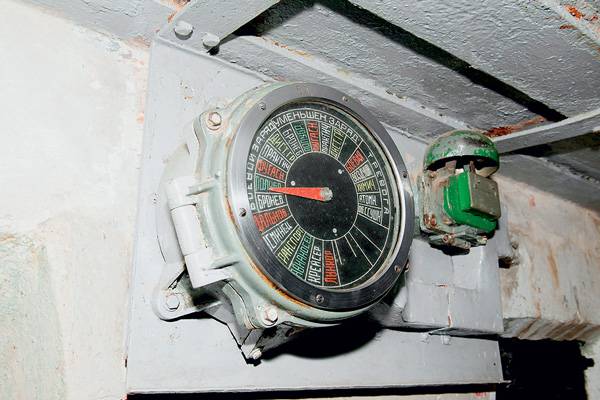
Remote Control
"Remote" Voroshilov battery. The arrow indicates the type of charge currently used, the type of target ship, and the type of alarm (combat, air, chemical, atomic, or land danger).
In October 1934, the construction of battery No. 981 was completed. In the presence of the commander of the Far Eastern Army, Blucher and a number of other high-ranking officials conducted training shots, and a month later the battery received the official name in honor of USSR Commissar of Defense Clement Voroshilov - this was how the Voroshilov Battery everyday name stuck to it. By 1941, four target posts were built for a horizontal base rangefinder, which made it possible to accurately and quickly determine the coordinates of enemy ships.
By the way, the 305-mm guns of the Voroshilov battery were neither the only nor the largest caliber in the fortress. Soviet experts quite reasonably believed that the battery, the coordinates of which are precisely known to the enemy, would sooner or later silence. Therefore, in the artillery of Vladivostok there were mobile railway guns, three of them had a caliber of 356 mm, three - 305 mm.
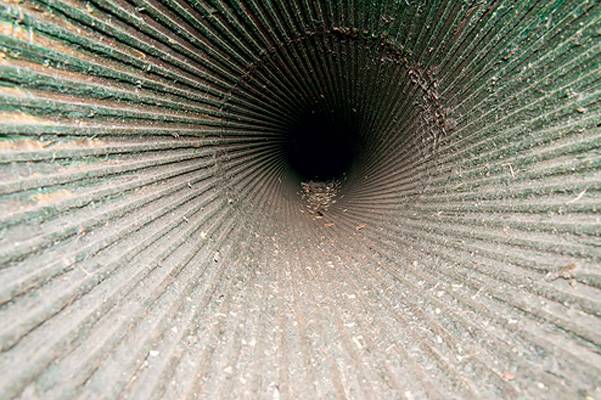
Main caliber
Battery caliber caliber - 305-mm. In the original, they were the three-gun turrets MK-3 − 12 of the battleship “Mikhail Frunze” (“Poltava”) equipped with 12 / 52 with guns of the Obukhovsky plant of the 1907 model of the year. On land, the towers were converted into coastal defense equipment MB-3 − 12.
Battery as it is
So, we have Voroshilov battery. It consists of a firing position, command posts - main and auxiliary - and four target posts. The garrison is 399 people. The firing position is those same towers, taken from the battleship "Poltava" and installed in concrete blocks on the crest of the hill at a distance 217 m from each other. Under the ground they are connected by an underground passage - the lost one. The reinforced concrete tower block dug into the rocky ground of the mountain, the thickness of the roof (2,8 m) and the outer walls (1,5 − 4 m) allows it to withstand the impact of projectiles with a caliber up to 356 mm, that is, it protects the battery from almost all the guns of the Japanese fleet. Of course, the Japanese had ship guns of caliber up to 460 mm and with a range of fire that was almost twice the range of the Voroshilov battery, the battleships Yamato and Musashi. But they were intended to fight the enemy ships, and their ammunition did not include concrete shells. In other areas of the battery, there was a shell cellar, a cellar for powder carts (bags of gunpowder), a cabin for calculation, and also diesel generators, which gave electricity.
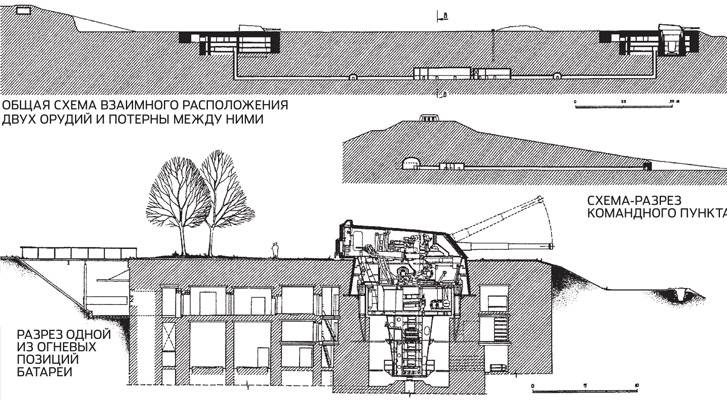
Sections
... firing position of battery No. 981 and tower block No. 1
The main command post was located on Mount Vyatlin in 1,5 km from the towers and had everything necessary for autonomous existence - central heating, diesel generator, water supply. Here was placed the "brain" of the battery - an electromechanical calculating device, which translated data about the target (distance and direction) into commands for aiming the guns. The teams were transmitted to the gun instruments by cable, that is, the gunners did not need to see the target - rotating the pickup devices, they only combined the hands on the dials of the receiving instruments.
The distance was determined using Zeis stereoscopic rangefinders, placed in rotating armored cabins at the main and alternate command posts, and directed to the target with the help of periscopic VBK-1 sight glasses. In addition, there were four target posts of a horizontal-base range finder for observing the target and projectile bursts. Each post was connected to the command post with a cable, and the real picture of the battle was visible at the post, and the coordinates of the target and the bursts were processed on a separate device - a direct course machine.
The whole complex provided the speed and accuracy of the data output for firing better than on the ship, where you had to take into account your own speed, direction of movement and pitching.
The calculation of one tower consisted of 75 man, and mechanization provided a quick supply of shells and firearms with powder charges. In total, the tower could give two shots per minute with two trunks (when firing by turns) or “fire” with volleys. The ammunition of each turret was 600 shells - armor-piercing, semi-light and high-explosive, and the range of 470-kg shells reached 23,2 km (or even 34,2 using the weaker and lighter ammunition of the year 1928).
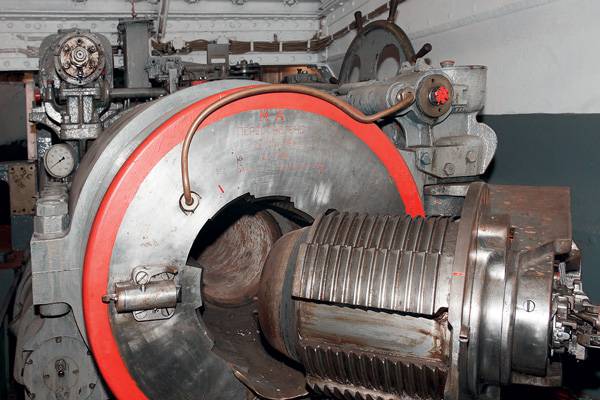
Breech
On the breech of the guns, the manufacturer’s stamp is preserved - Obukhov Steel Works, 1914 year, as well as an indication of the mass of the gun without a shutter - 3043 pud (49,8 t). This instrument carries the serial number 93.
In general, the defense picture was good. Any ship closer than 34 km to Russky Island came under fire from the Voroshilov battery. It was impossible to slip along the Amur or Ussuri bays to the port. In fairness it should be noted that, unlike the coastal batteries of Sevastopol, the Voroshilov battery could not shield the city from attacks from land because it was pushed towards the sea.
Battery combat service
So, in 1934, the Voroshilov battery began its service, but ... it did not have to fight. The difficult terrain of the coastal strip, combined with the powerful artillery of the Vladivostok fortified area, simply excluded the landing of troops near the city, much less the approach of enemy ships to the port. The operations of the Japanese army at Lake Hassan in 1938 and on the Khalkhin Gol River in 1939, which had the ultimate goal of cutting off Primorye from the rest of the USSR, failed.
By the beginning of the Great Patriotic War between the USSR and Japan, an agreement on neutrality was concluded, which Japan carefully carried out, since it was not able to fight against the United States and the Soviet Union at the same time. However, it was clear that coastal batteries are needed not to repel attacks from the sea, but in order to avoid such attempts. In this regard, Voroshilovskaya fulfilled its task up to the 1997 year.
For many years, the battery has been improved. In 1944, she acquired the equipment of a radar station gun landing, obtained under the lend-lease from England. Later on Vyatlina was installed domestic radar "Scot". Today, tourists, visiting the battery, which has become a museum, consider the spare barrels lying near the towers. The fact is that the survivability of the guns of such calibers is very small - only a few hundred shots, after which the barrels need to be replaced.
Afterword
Why and why was the Voroshilov battery abolished? Modern weaponand above all, highly accurate and very powerful missiles that are not even in nuclear equipment leave no chance of escaping long-term fortifications. The battery will be destroyed even before it has time to make the first volleys. She shoots 20 − 30 km, while rockets fly hundreds. The coordinates of the battery have long been known, and it is impossible to change them.
Modern defense is based on entirely different principles. At the beginning of XX century in history gone old fortress. The same fate at the end of the century befell the fortified areas, including the sea.
- Yuri Veremeev
- http://www.popmech.ru/weapon/52585-pushki-ostrova-russkiy-kak-voroshilovskaya-batareya-navodila-strakh-na-yapontsev/
Information